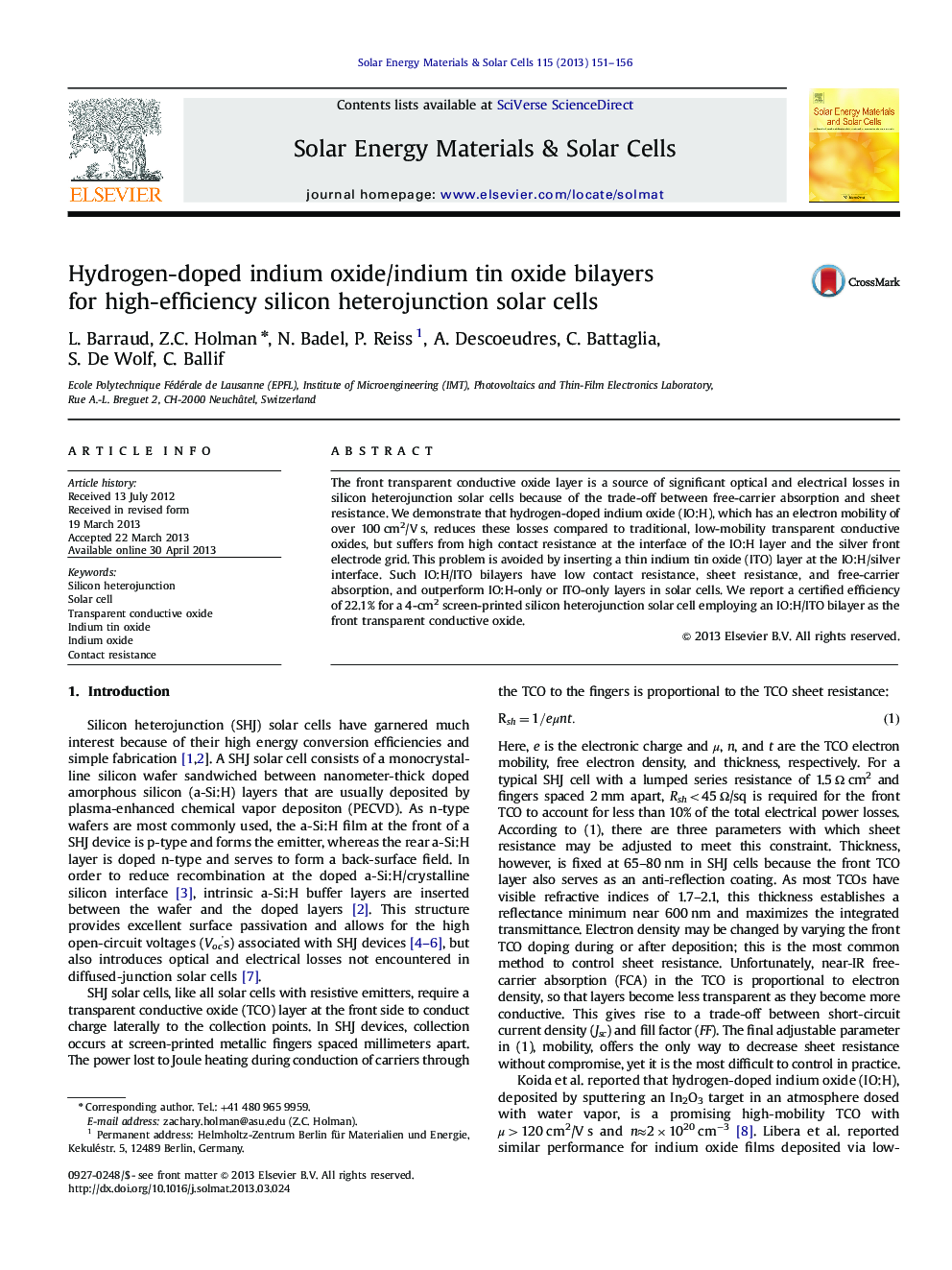| کد مقاله | کد نشریه | سال انتشار | مقاله انگلیسی | نسخه تمام متن |
|---|---|---|---|---|
| 78245 | 49322 | 2013 | 6 صفحه PDF | دانلود رایگان |

• High-mobility indium oxide (IO:H) is used in silicon heterojunction solar cells.
• Cells with IO:H have excellent EQE but low FF because the IO:H/Ag contact is poor.
• We propose IO:H/ITO bilayers for low contact resistance and high mobility.
• Solar cells with IO:H/ITO bilayers outperform cells with pure IO:H or ITO layers.
• With an IO:H/ITO bilayer, our best cell achieves a certified efficiency of 22.1%.
The front transparent conductive oxide layer is a source of significant optical and electrical losses in silicon heterojunction solar cells because of the trade-off between free-carrier absorption and sheet resistance. We demonstrate that hydrogen-doped indium oxide (IO:H), which has an electron mobility of over 100 cm2/V s, reduces these losses compared to traditional, low-mobility transparent conductive oxides, but suffers from high contact resistance at the interface of the IO:H layer and the silver front electrode grid. This problem is avoided by inserting a thin indium tin oxide (ITO) layer at the IO:H/silver interface. Such IO:H/ITO bilayers have low contact resistance, sheet resistance, and free-carrier absorption, and outperform IO:H-only or ITO-only layers in solar cells. We report a certified efficiency of 22.1% for a 4-cm2 screen-printed silicon heterojunction solar cell employing an IO:H/ITO bilayer as the front transparent conductive oxide.
Journal: Solar Energy Materials and Solar Cells - Volume 115, August 2013, Pages 151–156